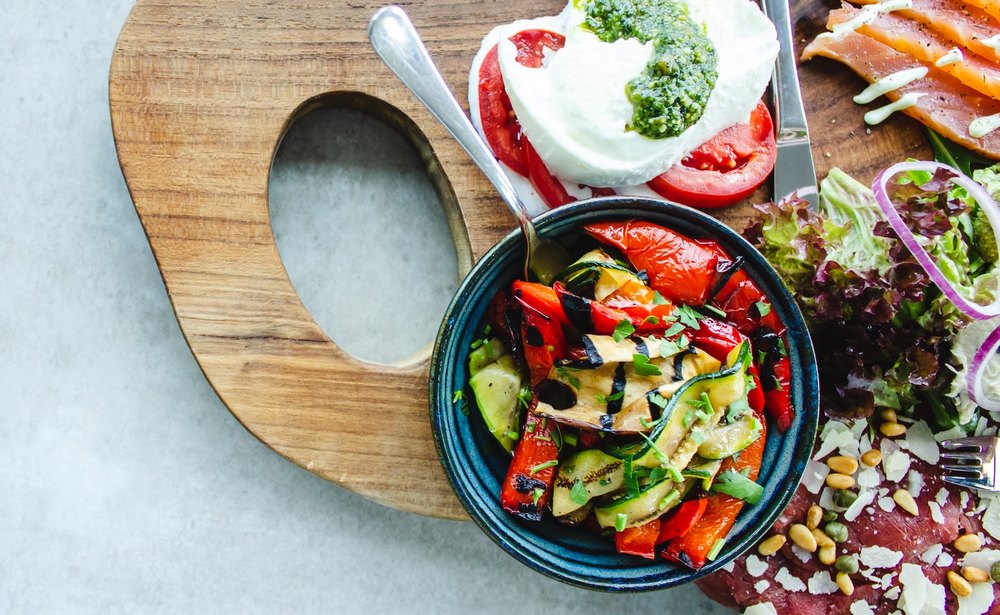Cabbage is a nutritious and delicious vegetable that you can have at home. Cabbage is not really expensive most times and you can use it in a variety of dishes. You could stock up cabbage for use, but its shelf life is not that impressive when you store in your fridge.
What if you decide to freeze it, will it make sense? It is not a bad idea to freeze your cabbage, but you will have to first cook it. Cabbage has a high content of water and fibrous membrane because it is an example of leafy vegetables, you cannot freeze it raw. The cabbage will become mushy and soggy if you freeze it raw and allow it to thaw.
However, cooking your cabbage before you freeze it will keep the texture and flavor. You could also decide to blanch your cabbage if you would not like to cook it completely, blanching it will allow it to be more resistant against cold temperature.
Choosing the Right Cabbage To Freeze
The better the quality of your cabbage, the healthier it can be before freezing, and the better it can withstand being frozen. So it is very important to pay attention to the quality of the cabbage you buy. The more the quality, the better the taste also. Your cabbage should be fresh before you freeze, buy the ones whose leaves are fresh and green and those that have dense and solid heads. Endeavor to check on the sell-by-date labeled on the package and resist the urge to freeze cabbage whose leaves are wilted and have become generally yellow.
The problem with cabbage is that it tends to deteriorate after being transported following its storage in the warehouse. It is recommended that you purchase your cabbage directly from the local farm market, a place you can surely get the fresh ones as much as possible. You could be lucky to have a garden where cabbages are growing, you are recommended to select them early in the morning just before the sun rises, optimal freshness is ensured by harvesting your garden’s cabbages when they are nearly frost.
Types of Cabbages to Freeze
Cabbages are of different types with some of them holding up better to freezing than others. The list below shows a few examples of the different cabbage types that we have; they all have the ways of using them and the different meals they go with.
- Green Cabbage: this is the most common type and the best when you cook. You can use it in multiple ways including adding it to stir-fries and stews.
- Red Cabbage: this has a red or violet color that is beautiful, it has almost the same popularity with green cabbage but it is most frequently used raw for slaws and salads.
- Bok Choy: This is very common in Chinese cuisines and it is best known for the fleshy stems and very deep green leaves. It needs to undergo steaming before eating because it is hardy and fibrous.
- Savoy Cabbage: this one is a bit distinctive thanks to its patterned leaves that have a hue that is light green. It is not always available in the year as it is a vegetable that is seasonal. It is mostly added to soups and stir-fries.
Preparing Cabbage for Freezing
The first thing you must do is to cook your cabbage before you freeze, you should first blanch it if you’ve not added it to a meal. The nutrients are locked and the color is naturally maintained when you blanch. Blanching also ensures it maintains its taste and quality when you freeze and later thaw it. Wash the head of your cabbage properly before you blanch, try to check properly, and remove all dirt or critters that could hide under any of the leaves. You might try to soak it for duration of 30 minutes inside saltwater to make sure there are no bugs on it. Rinse with plain water thoroughly after soaking. It is recommended that you remove any leaves that are yellow and cut your cabbage in quarters, do not remove the core that helps the leaves to be together when blanching. You can dry your cabbage by using a paper towel to gently pat it.
How then do you blanch? Follow these instructions:
- Heat a very large pot of water until it starts to boil.
- Add the quartered pieces of cabbage into the water that is already boiling.
- Allow the cabbage to stay in the water for one and a half minutes.
- Remove them thereafter and put them inside an ice water bath to prevent further cooking as well as help lock the green color. A colander could be used to remove it from boiling water to iced water.
- Remove the cabbage from the iced water once it has completely cooled, you should shake off excess water if any.
Freezing Cabbage
Endeavor to dry your cabbage before you allow it to undergo freezing. Excess water will result to the term ‘freezer burn’ which will for an excess crystal of ice that could cause the cell walls of the leaves of your cabbage to become damaged and they could become soggy after they are thawed.
Put the leaves on any baking sheet that you have prepared before you place it inside the freezer to freeze. This will prevent the leaves from becoming sticky when frozen by allowing it to flash freeze on a baking sheet for about two hours. After it has frozen, package the leaves inside freezer plastic bags and seal the plastic bags by making sure there is no excess air and endeavor to label with a storage date. After that, put the freezer plastic bags into your freezer. In case you plan to use your cabbage for cooked meals like stews or soups, you could first shred it before placing it into the freezer bags.

Freezing Cooked Cabbage Meals
You could also freeze your cooked cabbage with a different process because some other ingredients are involved. Check out how you can freeze some common cabbage meals:
Fried Cabbage
If you want to freeze fried cabbage, endeavor not to fully cook the cabbage so that the texture can be crunchy before freezing. Put the fried bacon and cabbage in the fridge to cool, after chilling, put into freezer plastic bags, and make sure it is airtight. Put labels on the bags with storage dates and put them into the freezer.
Cabbage Soup
This is a very common diet food which could be very stressful in cooking. You can freeze your cabbage soup by placing it into a rigid plastic container whose lid is airtight. Endeavor to leave some space in the container because the soup would expand when it freezes, it’s recommended to leave enough space. Securely close the lid and label your container with the storage date before you put it in a freezer.
Cabbage Rolls
Cabbage used to cook cabbage rolls will most times be thoroughly cooked and you need to ensure you are storing it properly so that it will not become soggy when you allow it to thaw. Take the cabbage rolls that are leftover and chill it for some hours inside the fridge. Put the rolls in a container that is freezer friendly and put them into your freezer one you allow them to chill. Ensure your cabbage rolls do not turn soggy by freezing the leaves of the cabbage separately.
Thawing Frozen Cabbage
The leaves of your cabbage will be ruined if you rush to thaw because the leaves can become soggy and mushy. Do not thaw cabbage in hot water, microwave or at room temperature, the color and flavor could be ruined if you do this. Thaw your frozen cabbage in the fridge for some hours or overnight and it will keep its flavor and texture by allowing it to gently and slowly thaw. It will also be kept from bacteria growth that could happen if exposed to a higher temperature. You can proceed to microwave it, skillet it, or stove it after it has thawed inside the fridge. You do not need to thaw your cabbage if you plan to use it in casseroles or soups, simply put the frozen cabbage in the dish and heat up or cook.
The Shelf Life of Cabbage
You will know how to use your cabbage if you can know how long you can keep it fresh, keep in the fridge, frozen, as well as at room temperature. Your cabbage can last in a fridge and freezer depending on how you store it. Check out the following information:
- Cooked cabbage can stay very fresh for five days if properly stored inside the fridge.
- It will last for about 12 months when properly stored in a freezer though the quality may deteriorate.
- You can keep your cooked cabbage inside a fridge for three days after you have thawed it.
- Eat your cabbage immediately if you reheat at room temperature or inside the microwave.
- Cooked cabbage has just two hours when you leave it at room temperature because of the potential growth of bacteria. Refreezing will allow the bacteria to be inactive, but once you thaw, they become active again.
- Do not refreeze cabbage that has been heated or left at room temperature for a very long time. Only refreeze if you kept them in a fridge or with ice crystals or yet to be exposed to a temperature that is more than 40°F. If not for these conditions, refreezing will deteriorate the texture and flavor.
- Check the cooked cabbage closely or perhaps smell it to know whether it has gotten spoilt or not.
Related Questions about Freezing Cabbage
Freezing Cooked Cabbage
This has been explained earlier in the post, please check it out.
Can I freeze cabbage leaves for cabbage rolls?
Separately freeze your cabbage leaves when you are freezing your cabbage rolls. Endeavor to blanch the leaves inside hot water and allowed to cool in an ice water bath before you lay on the baking tray. Try to flash freeze as earlier explained and put it into a plastic bag before freezing.
Can you freeze raw cabbage?
Freeze your raw cabbage in shredded or quarters and wrap them in aluminum foil or plastic wraps and placed inside freezer bags.
Can you freeze cooked red cabbage?
Blanch your red cabbage first to keep the vibrant color and nutrients before you freeze. Proceed to freeze just like the green cabbage.


